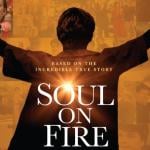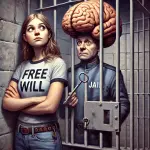 The Booth Brothers’ “He Saw It All” was probably embraced largely by virtue of its uniqueness. Everyone knows the picture the lyrics paint—a mute man talking, a deaf girl listening, a crippled man running, and a blind man who saw it all. It’s clever and fresh-sounding.
The Booth Brothers’ “He Saw It All” was probably embraced largely by virtue of its uniqueness. Everyone knows the picture the lyrics paint—a mute man talking, a deaf girl listening, a crippled man running, and a blind man who saw it all. It’s clever and fresh-sounding.
What some people might not know (and what I didn’t know until very recently), is that this concept isn’t new at all. In fact, it’s very old. If you don’t believe me, here is a folk poem, variations of which have been passed around among children since the 19th century. (Hat tip to this website, which contains even more information.)
- One fine day in the middle of the night,
- Two dead boys* got up to fight, [*or men]
- Back to back they faced each other,
- Drew their swords and shot each other.
- One was blind and the other couldn’t see
- So they chose a dummy for a referee,
- A blind man went to see fair play,
- A dumb man went to shout “hooray!”
- A paralyzed donkey passing by,
- Kicked the blind man in the eye,
- Knocked him through a nine inch wall,
- Into a dry ditch and drowned them all,
- A deaf policeman heard the noise,
- And came to arrest the two dead boys,
- If you don’t believe this story’s true,
- Ask the blind man he saw it too!
What’s interesting is that whoever originally conceived it, it was for a completely nonsensical purpose, as a joke. With “He Saw It All,” of course, it’s not nonsensical at all. The blind man really did see it all.
http://www.youtube.com/watch?v=hZT2CeM4l4g












